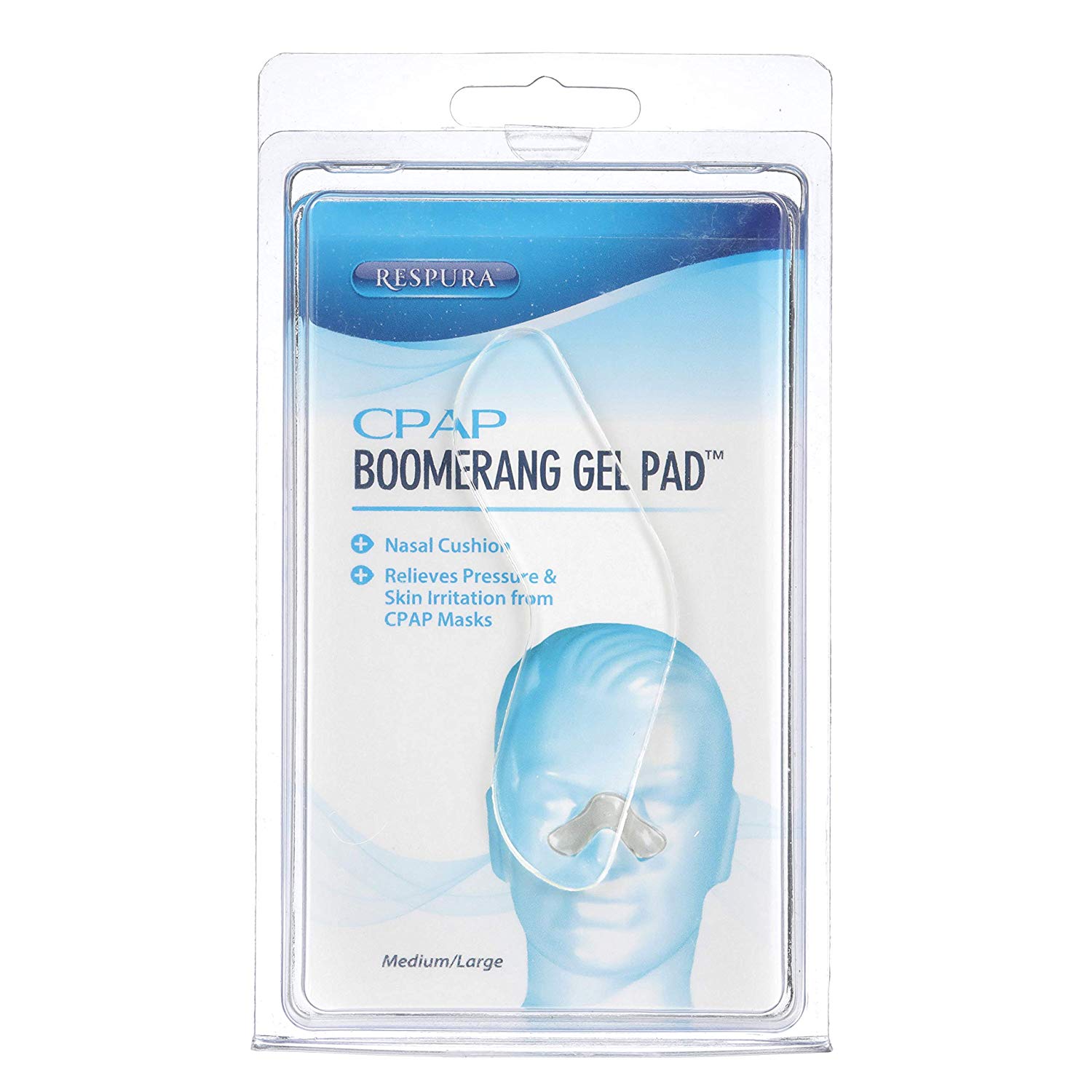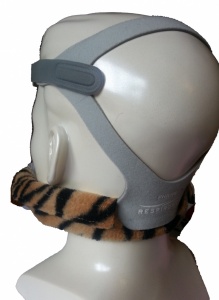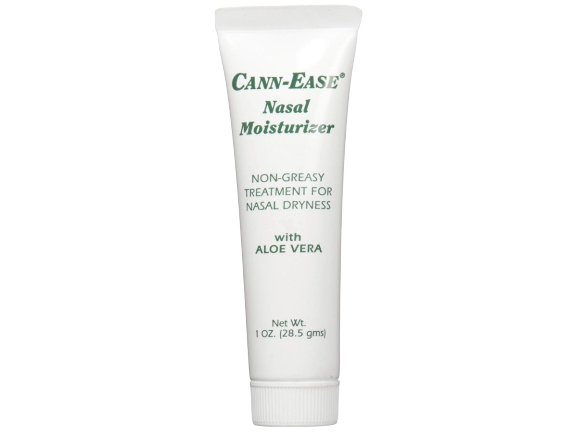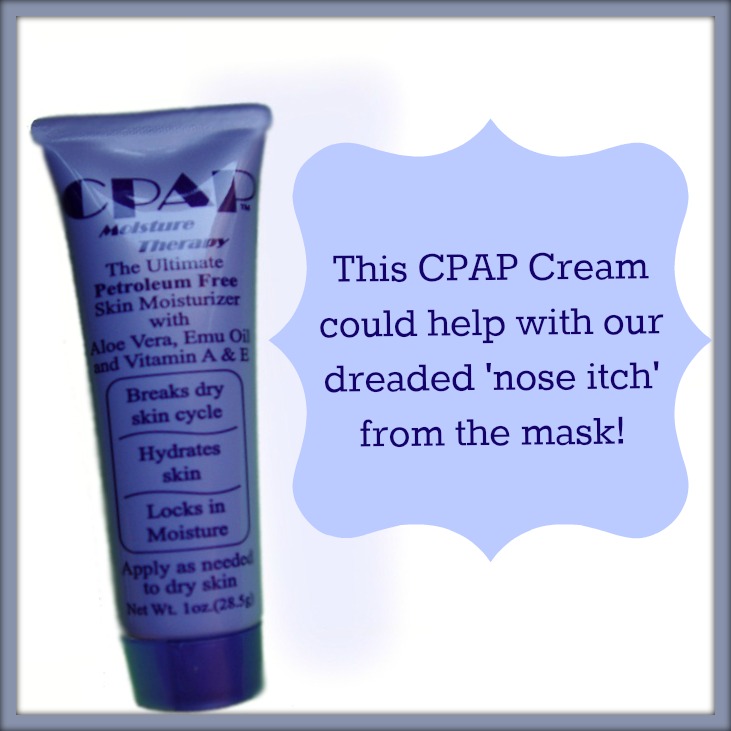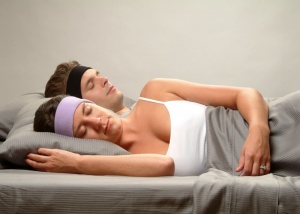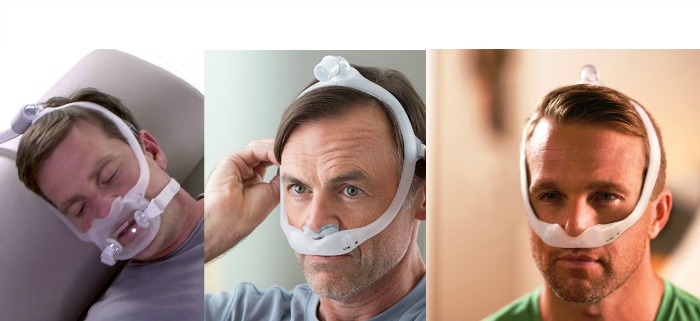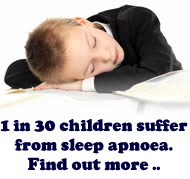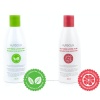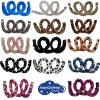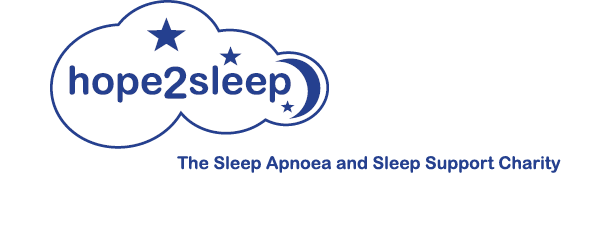| Tips For Problems Sleeping With CPAP or Non-Invasive VentilationWhat we're not always told is that using a CPAP or non-invasive ventilator for all sleeps can be challenging and not without hiccups! However, despite these minor issues, it really is very important that we use our equipment for ALL sleeps for the sake of our health. On the plus side, for those of us with sleep disordered breathing conditions like sleep apnoea, we don't always appreciate it, but we are fortunate that our condition can be treated without having to take pharmaceutical medication which always come with their own side effects, The following are our own tips (and those shared with the charity from real life users of CPAP and non-invasive ventilation, but please keep in mind they are not meant as a substitute for medical advice. However, we hope they prove useful. (lots of us certainly wish we'd known about these tips and products when we were first diagnosed). We also sell the popular book CPAP & Ventilator Secrets which is packed with useful tips and advice and Dr Steven Park, a marvellous ENT and Sleep Consultant has written a helpful book, which I was so impressed with that I agreed to write the preface for the book 'Totally CPAP.' You will also get tips from other mask users in the very active Private Facebook Group and the Public Support Forum, where you can discuss all things regarding Sleep Apnoea, CPAP, Ventilation + Snoring etc. Regular tips are also given via our newsletters, along with new of local support group events throughout the UK, so you're welcome to subscribe for these on this link Newsletter Subscription. TOLERATING CPAP AND VENTILATIONA lot of people find it hard to tolerate their equipment at first, so it's a good idea to set it up during the day whilst relaxing, such as watching tv, to practise using it, rather than waiting for bedtime when you have no other distractions and are desperate for sleep. If you need daytime naps, use it during these too for shorter periods. Practise wearing the mask only, without attaching it to the CPAP, to get used to it. Remember most people take at least 2 weeks to get accustomed to using their masks and machines (some a lot longer), so this is very 'normal' and you are not alone in this! Also see the page dedicated to people new to wearing a mask which you can also download to keep as a reminder when struggling 'Desensitising Tips.' MASK LEAKSBefore addressing the causes of leaks, a special mention has to go to 2 products. Firstly, the Silent Night Mask Liners as these give such a positive experience for most mask users - both for mask leaks (whatever the cause) and also for face marks from the masks, drooling and general comfort. Secondly, many people actually purchase the CPAP Moisture Therapy Cream solely for the reason in helping with mask leaks. Whilst it's benefits are primarily for hydrating the skin and healing damaged the skin, due to it's thicker consistency, people find that it can actually help create a better mask seal. Mask leaks are the No 1 problem people struggle with, hence the largest section of this article, and a good mask seal is imperative for successful treatment. High leaks mean your therapy will be compromised, and there are several reasons why your mask may be losing it's seal so here's some causes and fixes:-
If you do use a dishwashing detergent, make sure it is a cheap unbranded one without all the extra additives claiming to give us 'soft hands' etc. They may be good for the hands (although that's debatable), but are NOT good for our masks! We also supply the CPAP Soap which is good for either the once weekly deeper clean or for people who prefer soaking their mask every day. Baby wipes should be avoided (the manufacturers also warn of this), as they either contain lots of moisturising additives and often even alcohol (disguised in the ingredients list), and the ones that claim to contain no additives are, therefore, not strong enough to clean the oils off the masks and are no better than using plain water! In fact you may also be interested in reading THIS ARTICLE which is one of many, and why a lot of parents are moving away from the use of Baby Wipes. Also avoid any anti-bacterial wipes or cleaners, which contain alcohol and other harmful additives, which apart from damaging the masks with long-term use, the added ingredients are not safe for breathing unless thoroughly rinsed off, which defeats the object of using wipes! We do also sell the SoClean Cleaning and Neutralising Solution, which is an absolute necessity for those who use the SoClean Sanitiser as a pre-wash when introducing any new mask or accessory into the SoClean for the first time. However, this SoClean Solution, although expensive, is also a popular cleaning option when soaking the mask in water for a more thorough clean, and many people have reported their masks have come up like new! As mentioned, it's not cheap, but a little drop goes a long way and several of us use this SoClean Solution ourselves at the charity for a deeper clean. The Clinell Universal Wipes and Sprays are the only product we are aware of that are suitable for disinfecting the masks without causing damage to the more delicate silicone mask cushions and not a risk for breathing. They are a rare disinfectant that doesn't contain alcohol, and most importantly, bearing in mind this Coronavirus pandemic we are facing for the unforeseen future, they have now been laboratory tested and are proven to be effective against the exact strain of coronavirus that causes COVID-19 (SARS-CoV-2) in 30 seconds!
Getting the correct size is crucial, which is why people travel from all across the UK (and we've even had people fly to us from abroad) for our unique free mask fitting service, where people can try on masks, hooked up to a CPAP machine on our bed. If you wish to visit us for mask fittings or private one-to-one support, please book in advance, rather than just turning up at the charity. You can ring our local office on 01482 374181 or send us a message on this link Contact Us. We do our best to help people make good choices BEFORE purchase, so always ask for advice if you need it first! Trying on a mask in an upright position without the CPAP air blowing isn't ideal, so ask your clinic if you can try the mask in an elevated position attached to a machine. Nasal pillows can also be a problem, as not everyone has the same size nostrils, and there are many people that actually use different sizes in each nostril. The DreamWear Frame Sizes are as important as the Mask Cushion Sizes!
Nasal breathing is always the healthier way to breathe when possible, and whilst some clinicians rightly encourage people to nose breathe, this is not always easy to do, and especially if there's a physical cause making it difficult to nasal breathe. Expecting people new to CPAP or ventilation to tolerate a mask AND change their breathing technique is a tall order! However, when people are used to wearing a mask, it is always worth trying to train yourself to nose breathe if possible. Nasal Strips can help by opening up the nasal passages or there are nasal dilators or cones available. Sterimar natural nose spray can also help or a prescribed nose spray, but please bear in mind many over-the-counter nose sprays are only meant to be used short-term, and using them longer than the recommend time can make matters worse and cause rebound congestion. Please DO NOT try mouth taping with duct or medical tape as it can be dangerous and especially if the nose gets congeste!
You'll notice that we don't sell the current shaped CPAP Pillows either, as whilst they can certainly help some people, the success rate isn't good for the majority of mask users. We actually used to sell these, but stopped when the feedback on them was only about 30-35%, as we only sell comfort products which have at least a 70% success rate for all people. We at the charity have personally tried many different CPAP pillows manufactured in both the USA and UK, with little success and they're not cheap either! It depends on the length of a person's neck as to whether the mask will even end up in the side cut-outs, and what type of mask they are using, as to a person's success with them. Of course, if you have spare cash it's worth trying though. A softer pillow that can be scrunched up to give neck support and is better for side sleepers or try to get the mask to hang over the edge of the pillow. This works well for many people until they turn over in their sleep when the mask will end up in the middle of the pillow, so try placing the pillow lengthways so that it's narrower. Lots of people claim this works well, as when turning over in the night the mask, theoretically, should overhang on the opposite side of the pillow. If you do like a firm pillow, lots of people have had success with a Buckwheat Hull Pillow which can be bought on Amazon, as you can make indents where the mask goes and they do stay in place well - plus they have other health benefits. Another tip is that many people find a silk or satin pillowcase helps to cut down on face marks from the masks and headgear, and in fact satin pillows themselves are marketed for this purpose (anti-ageing) so it makes sense.
DRY MOUTHA CPAP Humidifier normally helps with this, which mostly your sleep clinic will provide here in the UK, but if you still have a dry mouth after experimenting with the precautions below, it would be worth trying the Xylimelts available on our website and with excellent reviews. Also keep a bottle of water by your bed or a cup with a lid (saves spilling a glass of water near your machine), but only drink just enough water to wet your mouth, as drinking can cause you to inhale any liquid (or food) if taken too close to your sleep time and can aggravate acid reflux. The air from the CPAP or ventilator can cause dry mouth problems, but also bear in mind that some medications people need to take for various conditions are also responsible - as are some medical conditions themselves like Sjögren's Syndrome and Diabetes, so the air pressure in the mask tends to exacerbate this. There are some other precautions you can take though, such as:-
WATER FROM THE HUMIDIFIER IN THE MASK (KNOWN AS 'RAINOUT')Many people can suffer from water entering their masks (commonly known as 'rainout') which can also give us a rude awakening from sleep (something we could well do without!). This is normally worse during the winter months, but can affect us during the summer too. It is caused by the heated water from the humidifier travelling up the CPAP hose and the heated water reacting with the cold hose, thus causing condensation. This condensation then starts to drip into the mask, but the good news is this is normally easily solved with tips and 2 products:-
For people using a humidifier with their machines, the humidifier needs positioning below head height and the hose itself elevating, as any 'rainout' managing to sneak its way into the hose should, theoretically, fall back down into the humidifier, rather than ending up in the mask. Do bear in mind the humidifier settings need adjusting as the seasons change - either higher or lower. It's not possible to state what the correct setting is right for each person, as it depends both on humidity and temperature of each person's bedroom, so try raising or lowering it until you get it just right. The default setting on both Philips Respironics and Resmed machines (unless changed by the clinic) is for automatic humidification, so changing this setting to manual so that 'you' control the amount of humidification you get can often help On Resmed the automatic is called 'Automatic Climate Control' and on Philips Respironics it's called 'Adaptive Humidification.' Both need changing to 'manual.' FACE AND/OR NASAL BRIDGE MARKS FROM THE MASK CUSHIONS
Many people use the CPAP Moisture Therapy Cream to moisturise their skin and help with marks from the cushion itself - an added bonus is that a lot of people find this can also help give a better mask seal due to its' thicker consistency, and although small, a tube of the cream lasts much longer than expected! The cream contains no substances that will damage the mask and is safe if inhaled. Please DO NOT use any creams which contain oils, alcohol, petroleum jelly, paraffin or mineral oil (many creams contain these substances in disguise). Not only can they damage the mask, but can also be unsafe if inhaled. Petroleum jelly-based products like Vaseline can cause an accumulation of the jelly into the lungs, leading to potentially serious inflammation such as Lipoid Pneumonia! (See this important article on our website https://www.hope2sleep.co.uk/blog/petroleum-jelly-products-like-vaseline-vicks-should-not-be-used-with-cpap-niv-oxygen-masks.html Some people report what they believe are allergies causing rashes on their faces. However, masks these days are not made from latex and whilst silicone allergies are possible, it is much rarer for this to happen! Mostly, this is either a reaction to people not managing to clean off ALL facial oils from their masks (see under the Mask Leaks section for cleaning the masks) or it can actually be a skin reaction to whatever they're using to clean the mask cushions. Again both the Silent Night Mask Liners and CPAP Moisture Therapy Cream can also come to their rescue!
It is very important to lay the Boomerang pad on the nose when in an elevated position before placing the mask on top, to ensure it stays in place. FACE MARKS FROM THE HEADGEAR STRAPSFor marks made from the mask straps themselves, there are Mask Strap Covers available which come in either Single Fleece Strap Covers (for lighter marks or simply more comfort) or Double Fleece Strap Covers (for deeper marks). There are even Mask Neck Comfort Strap Covers available for those who get sores/pain at the back of the neck.
UNCOMFORTABLE HEADGEARAt first the headgear may feel uncomfortable, which is mainly because we're not used to having to wear anything on our heads to sleep - let alone the mask on our faces! This should get easier with time. However, if the straps are too tight then it will be uncomfortable and can also cause morning headaches and neck pain, so make sure it's not fastened too tight - just enough to prevent leaks. Often when people use the Silent Night Liners, mentioned elsewhere in this article, they find that as the mask leakage improves, they can often slacken off the headgear. If the mask appears suitable, but the headgear is still a problem, see if your mask would be compatible to use with the alternative SoftCap Headgear. This Softcap is especially good with masks like the FitLife Total Face Mask and other traditional types of masks, and many people state they fine the softcaps more comfortable than the headgear that comes with the masks. Another option would be if you have a different mask with headgear you prefer, check to see if it will work with the existing mask as sometimes they will. As previously mentioned, the Mask Strap Covers also help make the headgear more comfortable, as the fleece covers are nice and soft against the skin. MORE HELP WITH ANY MORNING SKIN MARKSAssuming you have tried everything to avoid getting marks in the first place (like not over-tightening your straps and trying the products available, as unfortunately not every product works with every person), and you still have marks on your face - do not panic! At first sight after removing your mask the marks will be worse, but the majority of them will diminish fairly quickly, depending on your age and skin's elasticity. For any remaining marks, rub your skin with your fingers in circular movements to increase the blood flow and stretch the marked skin. Splash your face with cool water and pat dry with a towel. For further help it's now a good idea to moisturise your skin - perhaps even with the night cream you don't use now due to wearing the mask. You can even try skin plumping creams that are now widely available. Finally, you can use skin concealers and foundation, but choose powder based ones, as liquid ones can get into the creases and make the marks look worse! Remember to drink plenty of water during the day too, as this helps hydrate our skin! AIR PRESSURE TOO COLD OR TOO WARMSometime people complain the air is cold, but bear in mind the temperature of the air is taken from our own bedrooms, so think about whether you can raise the temperature of the room itself - perhaps even by just closing the window. Same goes for if it feels too warm - perhaps open the window or at least keep it open during the day. Adding a heated humidifier can also help when the air's too cold and remember the tips about 'rainout' if you already use a humidifier as often it's needed to raise the temperature higher. Same goes for if you're too hot - see if you can lower the temperature. Putting a Hose Cover on the tube can also help warm up the air - as can the addition of a heated hose, but as said previously, some people find heated hoses too warm, although these are very good in countries with extremely cold climates. Some people place their hose under the bed covers, but remember this can cause the mask to pull and tug on your face as you move during sleep. Also lots of people end up getting tangled up in the hoses which is why we highly recommend the Hose Lift mentioned previously. AIR PRESSURE HARD TO BREATHE AGAINSTThis can be a problem at first when we're not used to the pressure for exhaling, but many of the machines have pressure relief features (EPR on Resmed, C-Flex on Respironics, Smart Flex on Devilbiss and SensAwake on Fisher & Paykel) so speak to your sleep clinic about this. However, if the problem persists or if you have any conditions like COPD, speak to the clinic who may be able to prescribe BiPAP, which has a lower exhale pressure than the prescribed inhale. It is NOT recommended to adjust your own pressures......remember these machines are prescription items for a reason and the pressure is part of the prescription. You will never hear the Hope2Sleep Charity recommending pressure changes, as it's like advising someone to take extra prescription medication. Always be guided by your sleep clinic on these issues, and most sleep clinics are very helpful in working with the patient. AEROPHAGIA (COMMONLY KNOWN AS WIND!)This is a subject that causes embarrassment to a lot of people, yet is really common, especially when new to CPAP and ventilation. Fortunately, for most people it passes in time, and unfortunately many people can be doubled up in pain in the early days in a morning, but it really does normally disappear. Mask leaks can also cause this, or if you've been using a nasal mask and you open your mouth during sleep - in this case you will either need a full face mask or the addition of the Dr Dakota Neck/Chin Support or a Chin Strap. There is a good video on this subject below by a highly respected Sleep Tech:- NOSE BLEEDSNose bleeds are rare, but can happen when new to CPAP or ventilation, and for most people this does pass. The problem is more common with the nasal pillows style of masks. The first thing to try adding is a CPAP humidifier which sorts the problem for the majority of people, and the Cann-Ease Nasal Moisturiser is especially for people on CPAP and oxygen to help with a dry nose. Saline nose sprays or gel from the chemist can help too, but always make sure there is no petroleum or alcohol in the ingredients. Never hesitate in seeing your GP about this problem if it is persistent. NASAL IRRITATION AND CONGESTIONAgain, a Humidifier for the CPAP or ventilator can help with this and the Cann-Ease Nasal Moisturiser, but also make sure the filters in the back of the machine are up-to-date. Most of the machines have, not just the foam filter, but also additional disposable filters to catch the finer particles which can be a source of irritation. There are also the Bacteria Filters that have helped may people with allergies, sinus issues and asthma etc. They can be used with most brands of machines and some hospitals do give them out to children or COPD sufferers. If all the above fails, try a saline nose spray or a prescribed one from your GP. It is also worth considering getting a referral to an ENT consultant who sometimes can offer surgery. (Kath at the charity had surgery on her turbinates and septum, and whilst it hasn't cured the sleep apnoea, it's certainly helped her breathe easier in the masks). BODY PAIN AFTER SLEEPING WITH CPAP OR NON-INVASIVE VENTILATORSIt goes without saying that any severe body pain should be discussed with your GP, but when body pain suddenly appears after sleeping with the CPAP or NIV, it can be caused due to the following reasons:-
THE DREADED 'ITCHY NOSE SYNDROME'This is another really common complaint by mask users, and especially when new to wearing a mask. It is mainly caused by the air from the pressure contained within the mask, causing the very fine hairs on the nose and/or face to be 'blown' by the air, causing that tickling/itching sensation. Of course, it's also a great annoyance when people have managed to get a good mask seal, to then have to disrupt the seal to place a finger inside the mask to ease the itch by scratching the skin. A few remedies to try:-
DIFFICULTY FALLING ASLEEP WITH THE MASK ONIt can be challenging at first drifting off to sleep with the mask on and air blowing - just like it's hard at first for children to tolerate teeth braces. This is another reason for practising using it during the day, especially when new to wearing a mask for sleep. Try not to go to bed until you're tired and ready for sleep. There are lots of things to do that will work for different people such as reading or listening to music, or even mediation apps. Use whatever method works well for you to help relax. Listening to relaxing music is a big hit with lots of people, and we've recently added the marvellous SleepPhones to the website. Many people have told us they wish they had been around when they were new to their machine and mask. These work well with the masks and people have found other surprising benefits, like helping with mask leaks and doubling up as sleep masks to block out the light. Of course, they also block out the sound of the machine, for people extra sensitive to noise. They are one of the few products we sell which are suitable for people who don't suffer sleep disordered breathing and need to wear a mask - (Kath's son stole her first one and hubby the 2nd to use when gardening - so she finally bought herself the wireless version and vows that NOBODY is stealing these from her
PROBLEMS READING WITH THE MASK ONIf you like to read in bed to wind down in bed, then you may come against problems if you need to use glasses to read. However, there are now several masks that do allow the use of reading glasses, like the Respironics' DreamWear range amongst others. Lots of people unintentionally fall asleep with the book in their hand and no mask on - not a good idea! E-Book Readers are a good solution and worth their weight in gold, as if you're not lucky enough to wear a mask that allows reading glasses, the text fonts can be raised to very large sizes. Nowadays the Amazon Kindles are peoples favourite e-readers and there are several to choose from, including those with backlights (although do bear in mind there's controversy as to whether we should be reading from digital devices these days with backlights, but sometimes we just have to do what works best for us).
We do hope some of these tips help, and as new products come out and new ideas come to light we will edit the article. Who knows....one day we may not need this kind of help if a 100% cure for our problem comes along in the future Best Wishes for Safe Comfortable Sleep. All the Hope2Sleep Charity Team
© v3 2024 – Hope2Sleep Charity www.hope2sleep.co.uk |
|

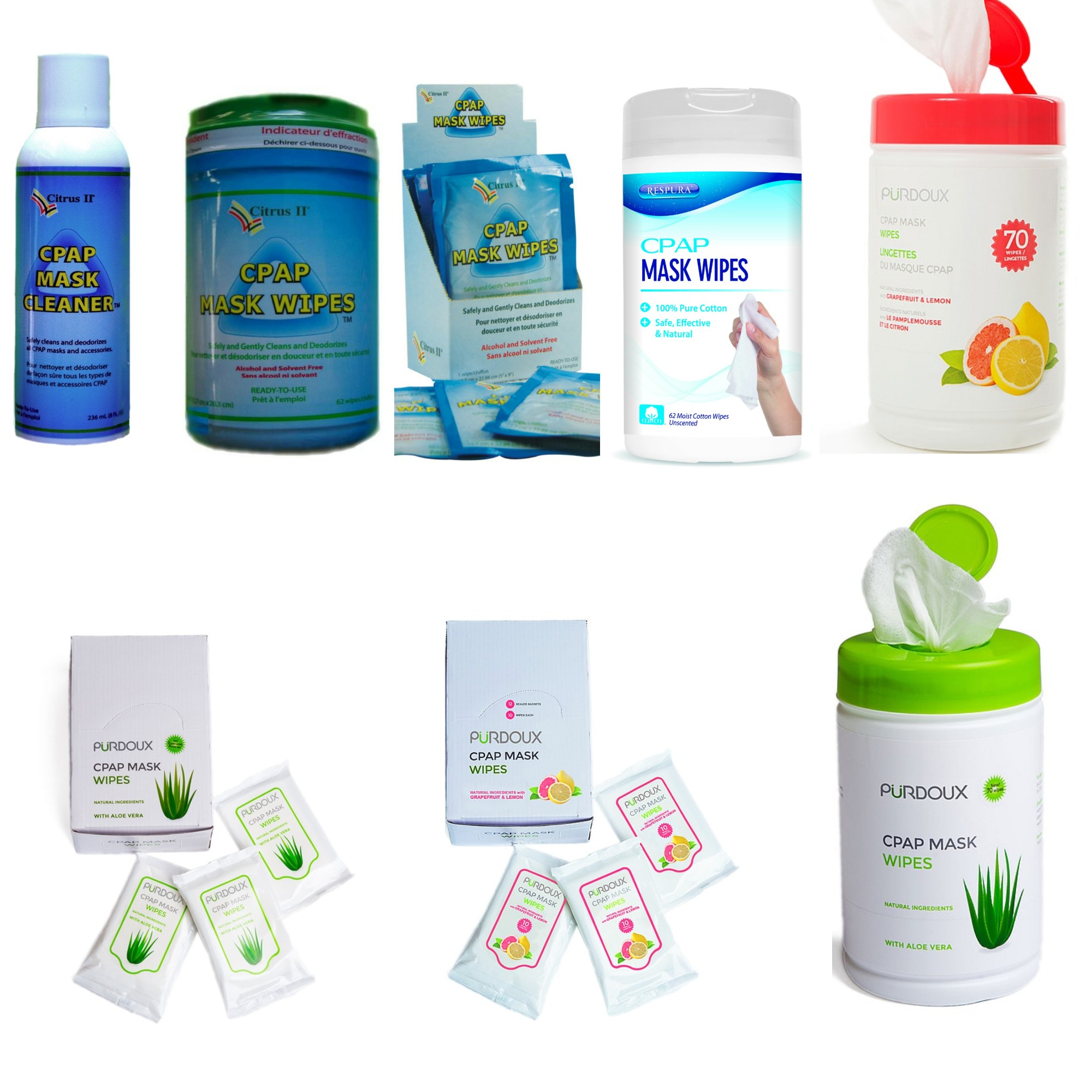

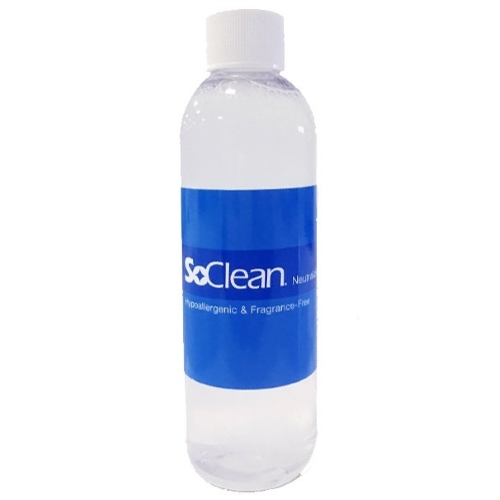
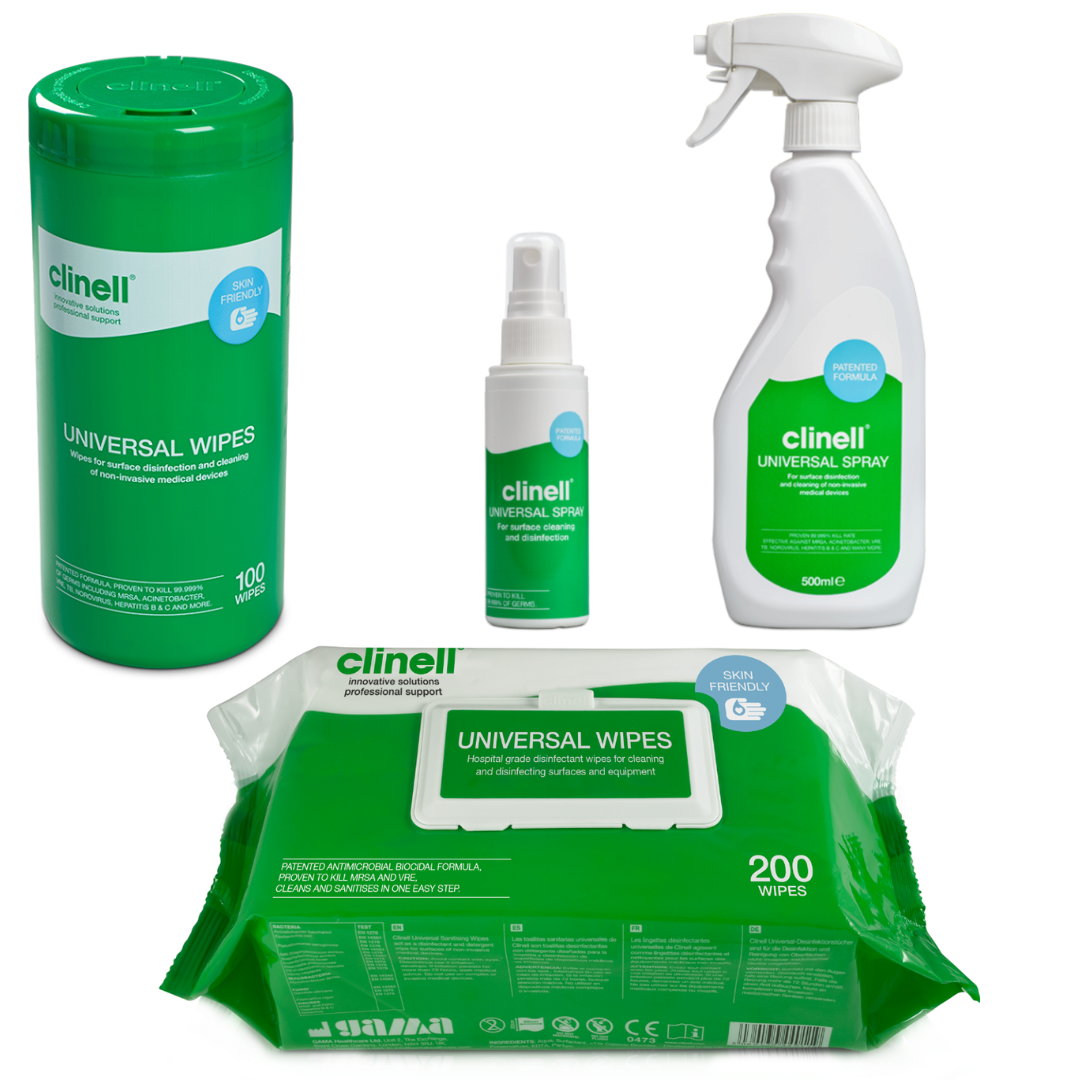

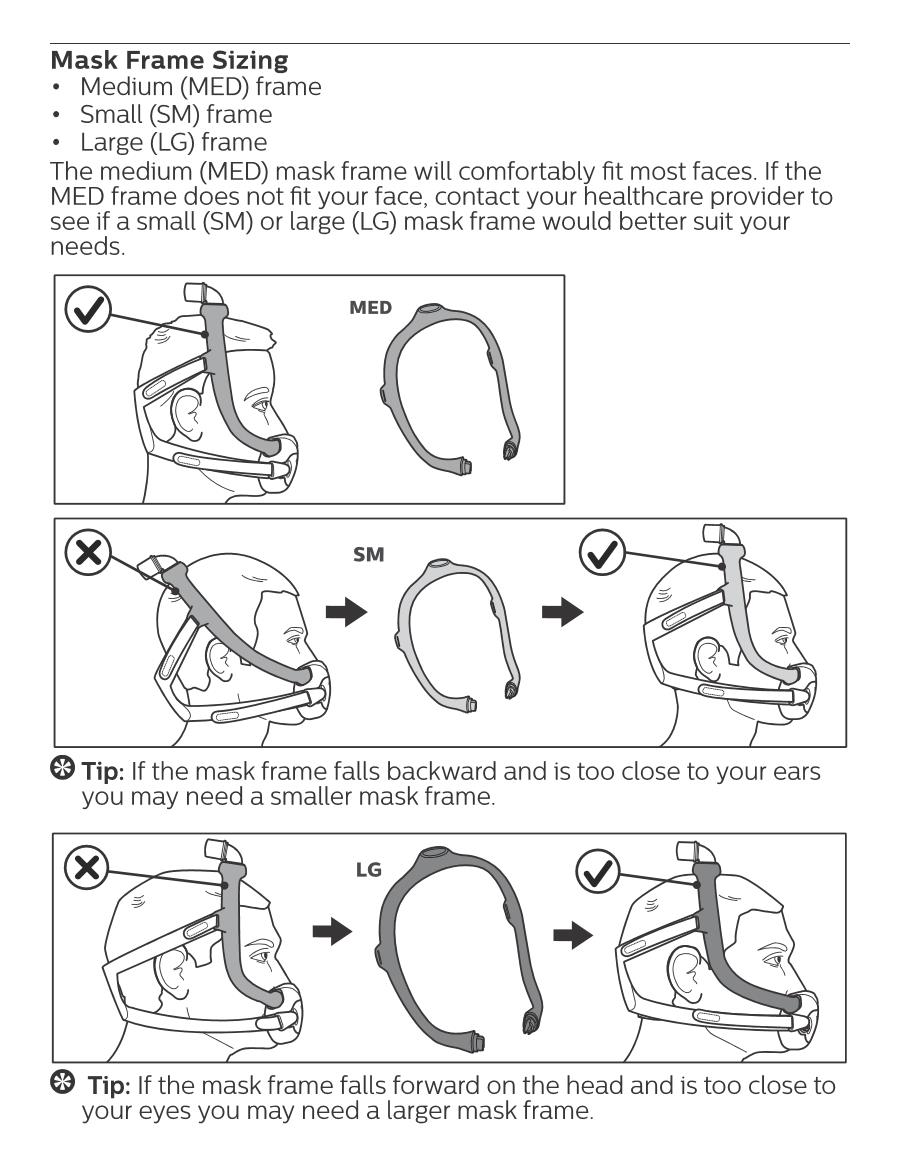
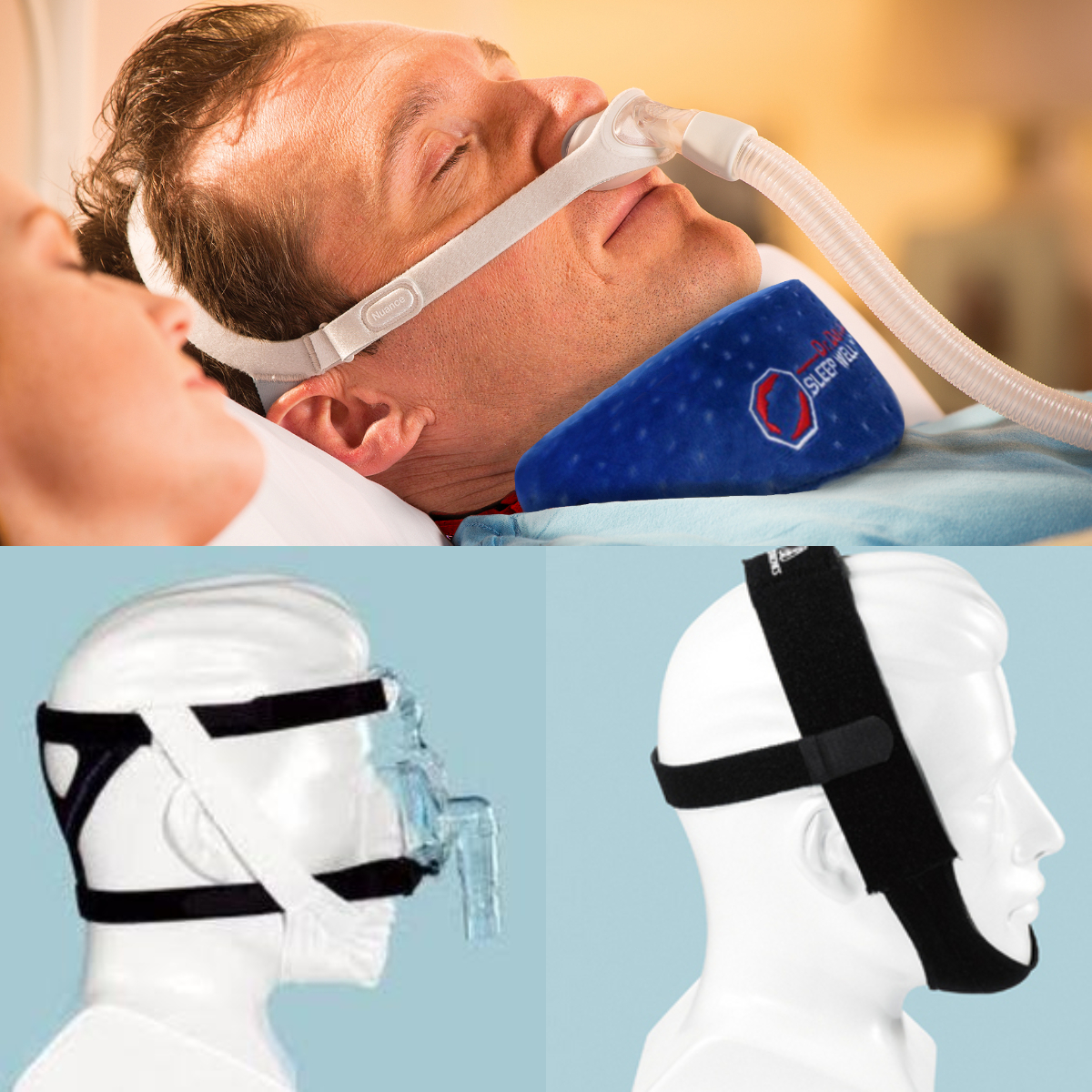
.jpg)

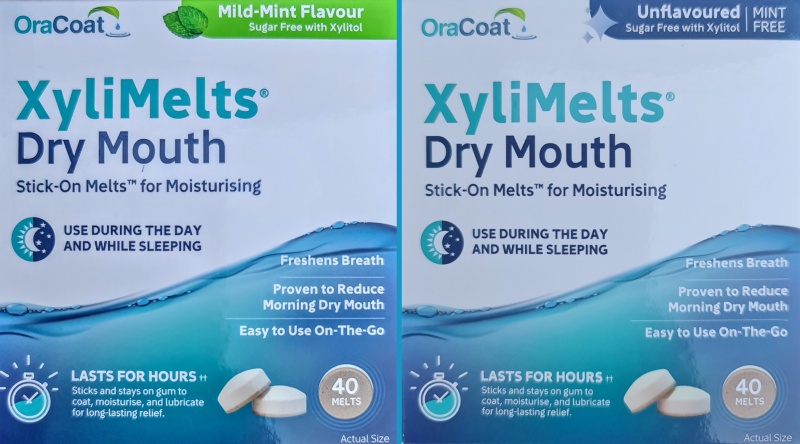
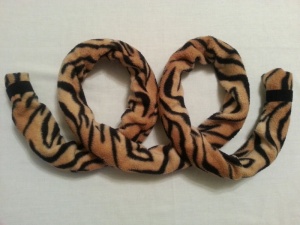
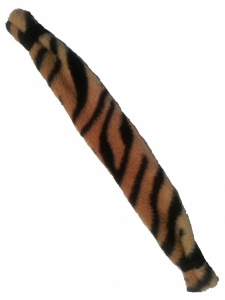
.jpg)
